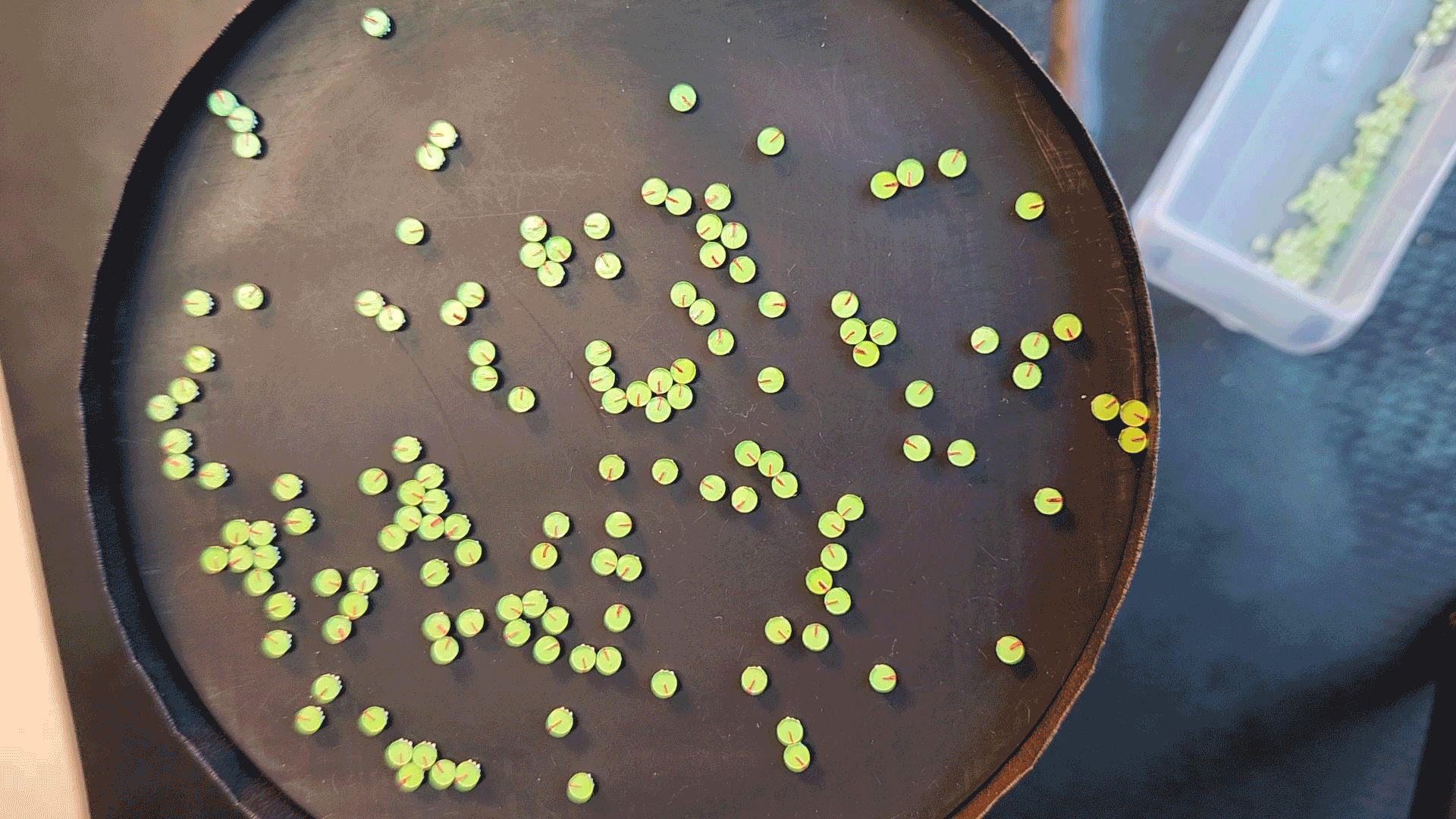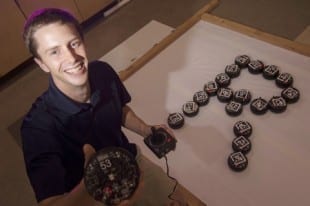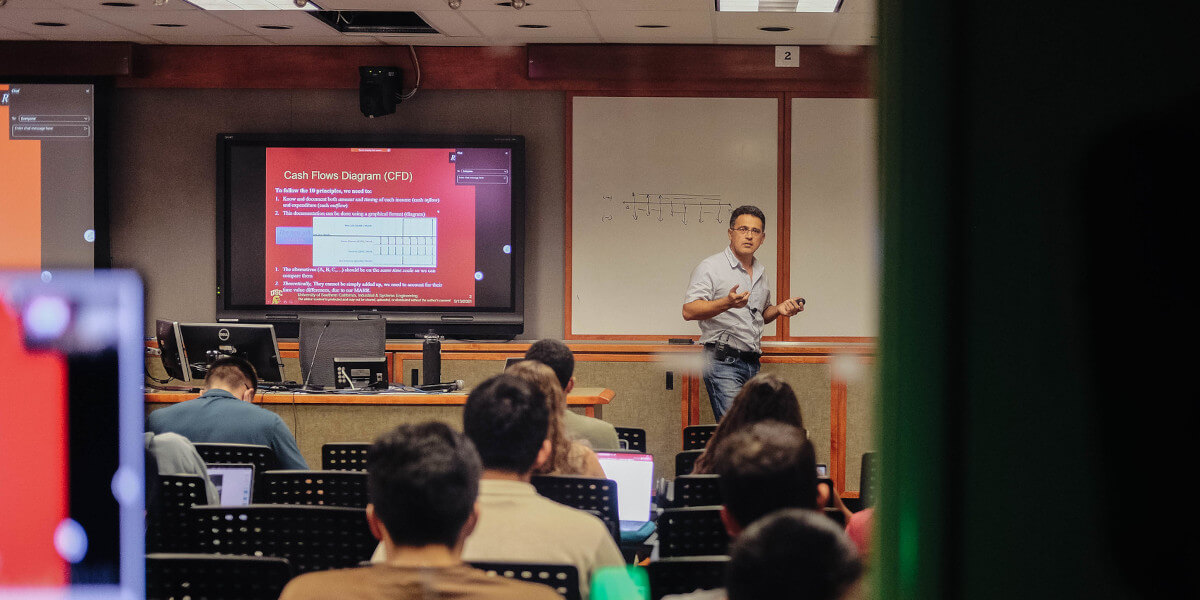
How microbots swarm
Individual robots can work collectively as swarms to create major advances in everything from construction to surveillance, but microrobots’ small scale is ideal for drug delivery, disease diagnosis, and even surgeries.
Vibrating tiny robots could revolutionize research.
Individual robots can work collectively as swarms to create major advances in everything from construction to surveillance, but microrobots’ small scale is ideal for drug delivery, disease diagnosis, and even surgeries.
Despite their potential, microrobots’ size often means they have limited sensing, communication, motility, and computation abilities, but new research from the Georgia Institute of Technology enhances their ability to collaborate efficiently. The work offers a new system to control swarms of 300 3-millimeter microbristle robots’ (microbots) ability to aggregate and disperse controllably without onboard sensing.
The breakthrough is unique to Georgia Tech’s expertise in electric and computer engineering and robotics and its push for interdisciplinary collaborations.
“By collaborating with roboticists we were able to ‘close the gap’ between single robot design and swarm control,” said Azadeh Ansari, an assistant professor in the School of Electrical and Computer Engineering (ECE). “So I guess the different elements were there, and we just made the connection.”
The researchers presented the work, “Controlling Collision-Induced Aggregations in a Swarm of Micro Bristle Robots,” in IEEE Transactions on Robotics.
The Challenges of Microbots
While larger robots can control movement through sensing the environment and wirelessly sending this data to each other, microbots do not have the capacity to carry the same sensors, communications, or power units. In this study, the researchers instead utilized inter-robot physical interactions to encourage robots to swarm.
“Microbots are too small to interpret and make decisions, but by using the collision between them and how they respond to frequency and the amplitude of global vibration actuation, we could influence how individual robots move and the collective behaviors of hundreds and thousands of these tiny robots,” said Zhijian Hao, an ECE Ph.D. student.
These behaviors, or motility characteristics, determine how microbots move linearly and the randomness in their rotation. By using vibration, the researchers could control these motility characteristics and perform motility-induced phase separation (MIPS). The researchers borrowed the concept from thermodynamics, when an agitated material can change phases from solid to gas to liquid. The researchers manipulated the level of vibration to influence the microbots to form clusters or disperse to create good spatial coverage.
To better understand these phase separations, they developed computational models and a live tracking system for the 300-robot swarm using computer vision. These enabled the researchers to analyze microrobots’ behavior and motion data that give rise to the swarm’s characteristics.
“This project is the first complete pipeline using this MIPS that can be generalized to different microbot swarms,” Hao said. “We hope people will find that using physical interactions is another new way to control the microbots, which initially was very difficult to do.”
Original Article: Using Vibrations to Control a Swarm of Tiny Robots
More from: Georgia Institute of Technology
The Latest Updates from Bing News & Google News
Go deeper with Bing News on:
Swarm robotics
- Soft caterpillar robot moves its body by origami-power
If a soft-bodied robot uses rigid actuators to move its body, then it isn't really soft now, is it? An experimental new caterpillar-inspired bot gets around that conundrum by using soft, collapsible ...
- Swarms of Miniature Robots Clean Up Microplastics and Microbes, Simultaneously
Microscale robots that mimic natural swarms, like schools of fish, have been designed to capture microplastics and bacteria from water.
- Swarm of tiny snail robots stick together to form new structures
Researchers have built a swarm of miniature, snail-inspired robots, minus all the mucus. Instead, a retractable suction cup works in tandem with the remote-controlled machine’s tank-like treads to ...
- Video shows how swarms of miniature robots simultaneously clean up microplastics and microbes
When old food packaging, discarded children's toys and other mismanaged plastic waste break down into microplastics, they become even harder to clean up from oceans and waterways. These tiny bits of ...
- Microrobots Swarm the Seas, Capturing Microplastics and Bacteria [Video]
Researchers have developed microrobots capable of removing microplastics and bacteria from water, addressing the dual threat of pollution and disease spread in aquatic environments. When old food ...
Go deeper with Bing News on:
Microbots
- Nanobots to the Rescue! The Future of Medical Microbots
The IRS announced tax relief for those impacted by severe storms in Nebraska. Former Nebraska Congressman Jeff Fortenberry is facing a new indictment. A judge has dismissed the wrongful death ...
- Fighting cancer at the root
Researchers at the branch of the German Cancer Research Center (DKFZ) in Dresden are working on tiny robots. These are designed to act ...
- Medical Moment: The future of medical microbots
(WNDU) - Robots have changed the medical field, and now, those robots are becoming smaller than ever before. They’re called microbots, also known as nanobots. They’re microscopic in scale, and ...
- Health Beat: The future of medical microbots
Robots have changed the medical field and are now becoming smaller than ever before. They’re called microbots, also known as nanorobots. Microscopic in scale, experts say thousands of them could be ...
- Here are the future of medical microbots
If you need help with the Public File, call (313) 222-0556. At WDIV, we are committed to informing and delighting our audience. In our commitment to covering our communities with innovation and ...










